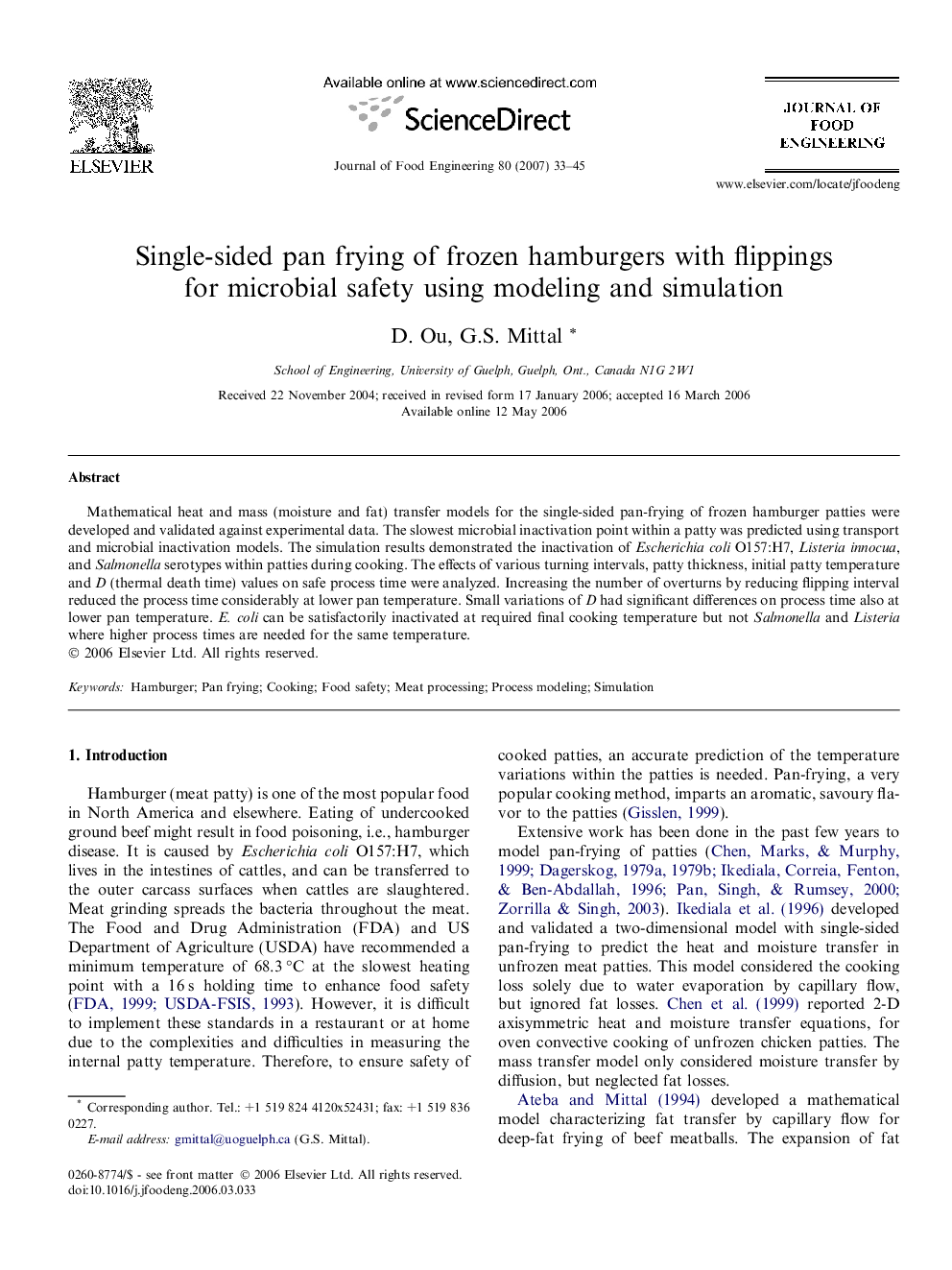| Article ID | Journal | Published Year | Pages | File Type |
|---|---|---|---|---|
| 226299 | Journal of Food Engineering | 2007 | 13 Pages |
Mathematical heat and mass (moisture and fat) transfer models for the single-sided pan-frying of frozen hamburger patties were developed and validated against experimental data. The slowest microbial inactivation point within a patty was predicted using transport and microbial inactivation models. The simulation results demonstrated the inactivation of Escherichia coli O157:H7, Listeria innocua, and Salmonella serotypes within patties during cooking. The effects of various turning intervals, patty thickness, initial patty temperature and D (thermal death time) values on safe process time were analyzed. Increasing the number of overturns by reducing flipping interval reduced the process time considerably at lower pan temperature. Small variations of D had significant differences on process time also at lower pan temperature. E. coli can be satisfactorily inactivated at required final cooking temperature but not Salmonella and Listeria where higher process times are needed for the same temperature.
